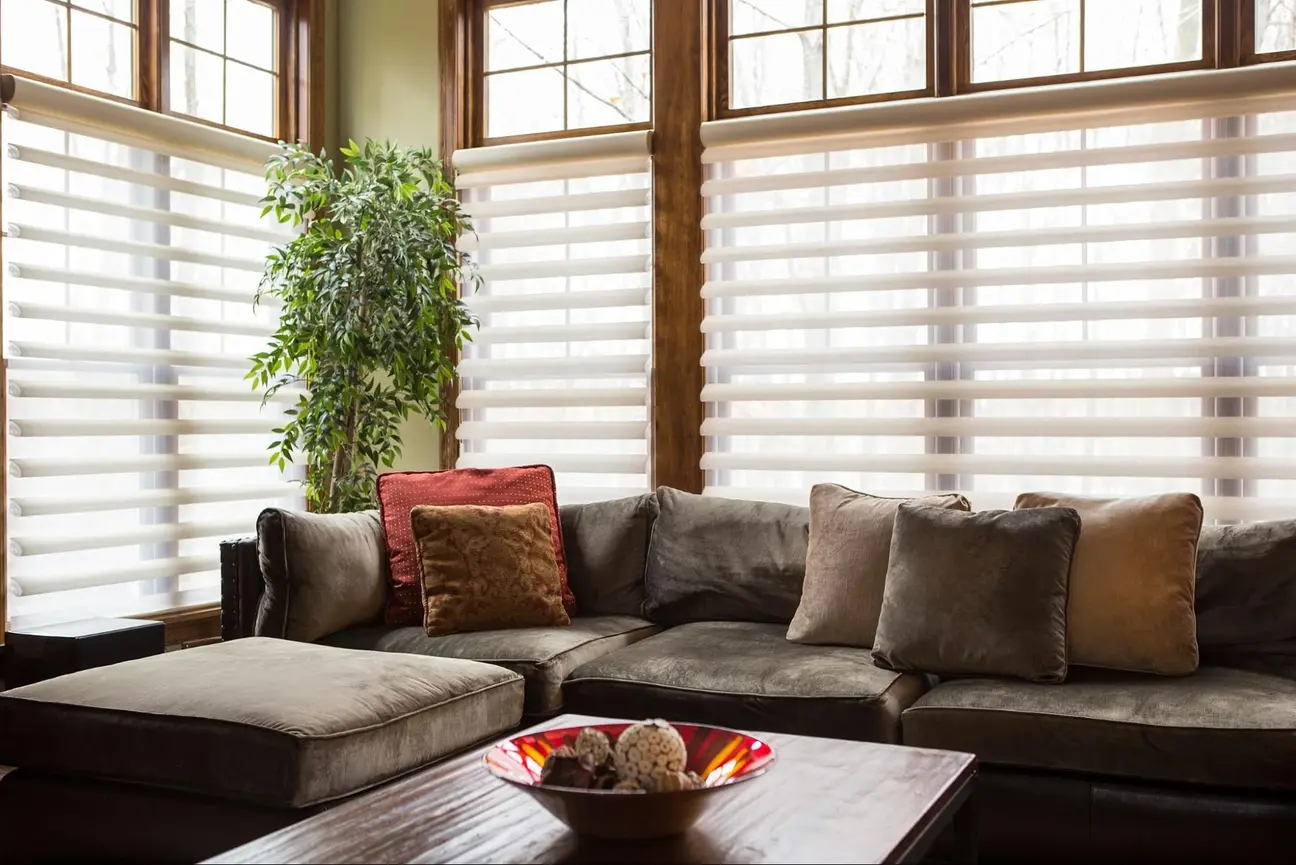
Broken blinds can be a real eyesore in your home. They let in unwanted light and compromise your privacy. But don’t worry – fixing them is often more straightforward than you think. With some know-how and essential tools, you can get your window treatments back in working order.
Most blind repairs can be done at home without calling a professional. Whether you’re dealing with stuck slats, frayed cords, or broken mechanisms, there’s usually a straightforward fix. By learning how to repair your blinds, you can save money and extend the life of your window coverings.
This guide will explain common blind problems and their solutions. You’ll learn how to identify the issue, gather the right materials, and follow step-by-step instructions to fix your blinds.
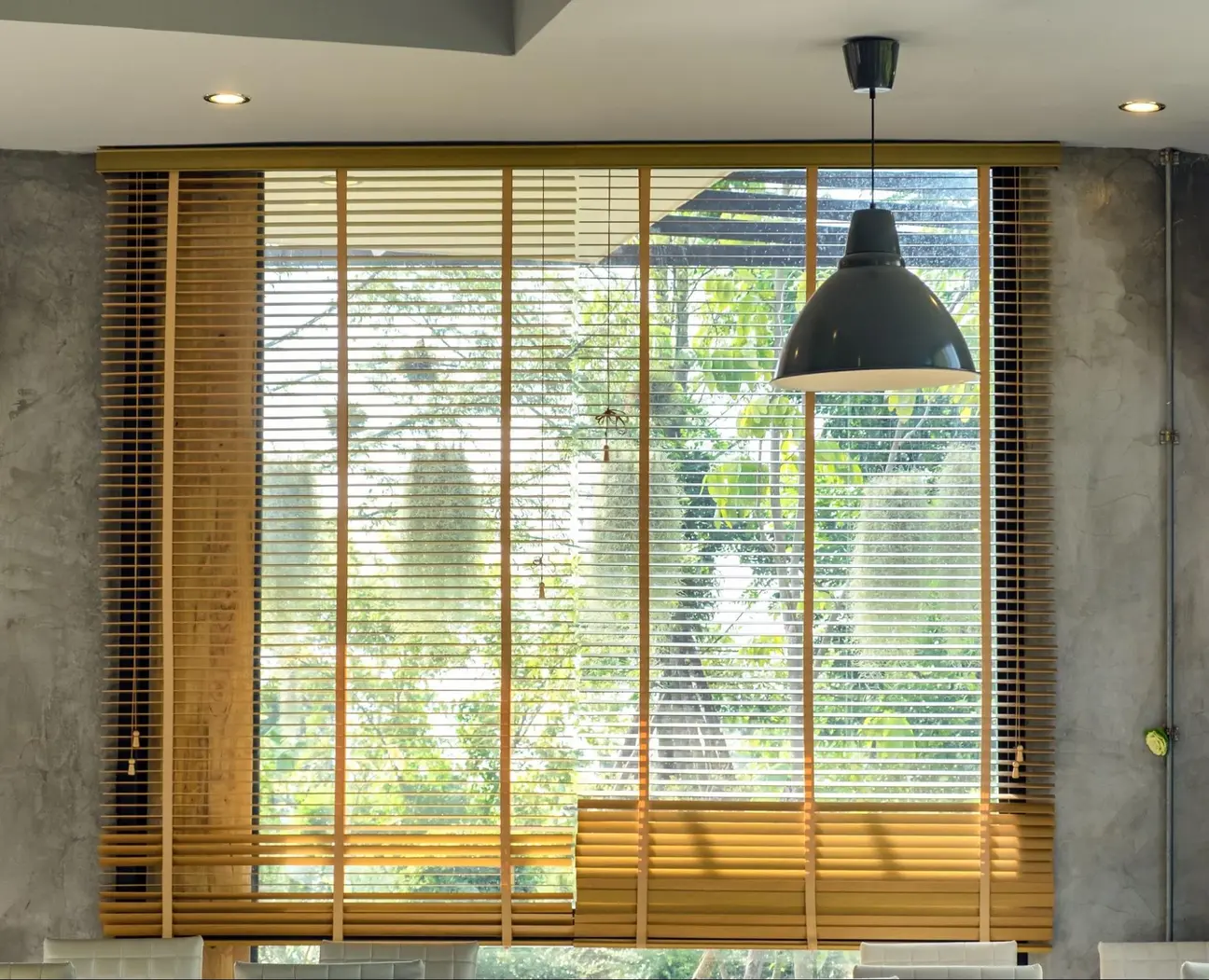
Before fixing broken blinds, you must know what kind you have and what’s wrong with them. This will help you pick the correct repair method and tools.
Venetian blinds are standard in many homes. They have horizontal slats that tilt to control light. You can adjust them with a wand or cord.
Vertical blinds hang from a track and move from side to side. They work well for sliding doors and oversized windows.
Roller blinds are made of one piece of fabric. They can be opened and closed by rolling them up or down.
Cellular shades have a honeycomb shape. They help insulate your windows and save energy.
Roman shades fold up into pleats when raised. They give your room a soft, elegant look.
Broken slats are a frequent issue with Venetian blinds. You might see cracks or chips in the material.
Tangled or frayed cords can make raising or lowering your blinds hard. This happens with all types of corded blinds.
Damaged carrier stems in vertical blinds can cause slats to fall off the track.
Roller blinds sometimes get stuck or won’t roll up evenly. This could be due to a broken spring or dirty roller.
Cellular and Roman shades may have torn fabric or broken lift mechanisms, which affect their ability to open and close.
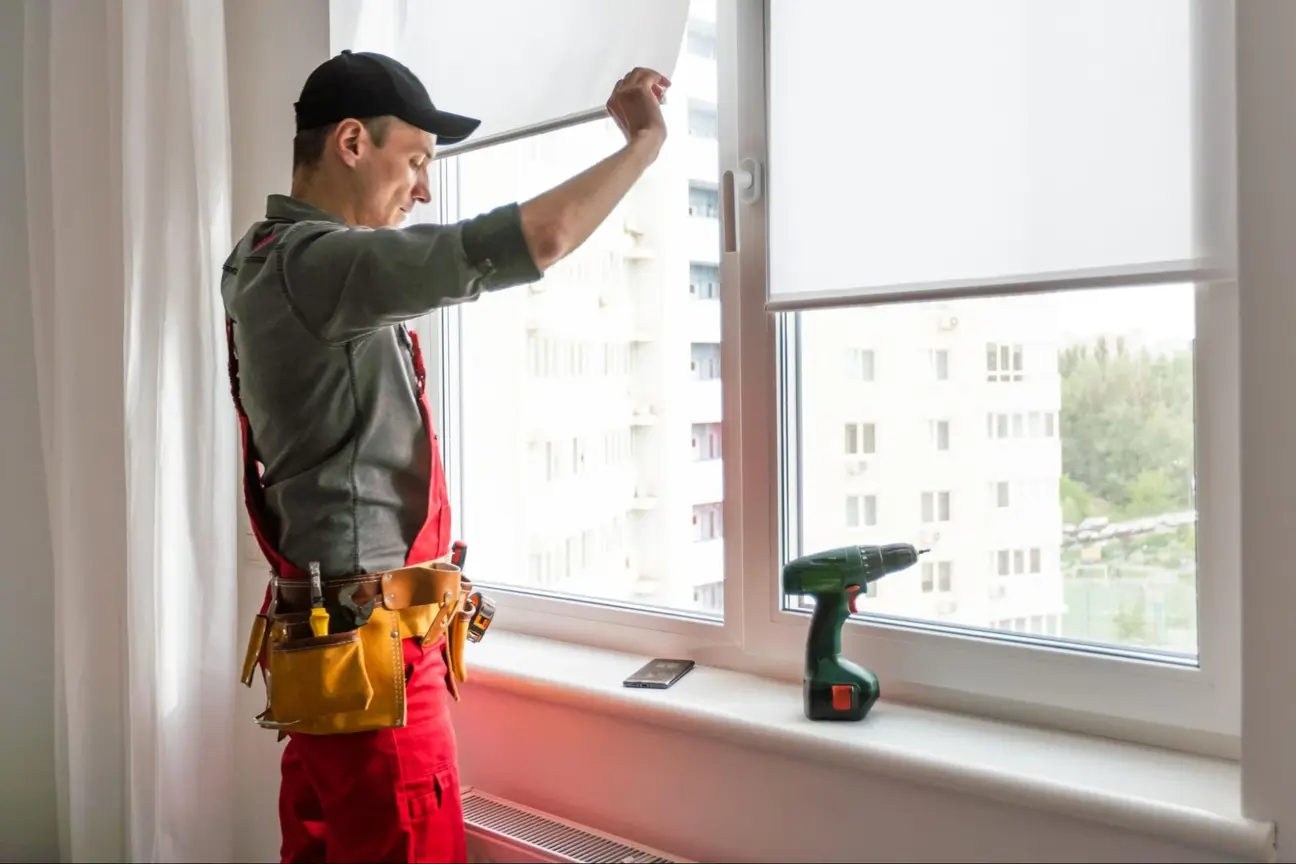
Before starting repairs, you’ll need the right tools and parts. Having these on hand will make fixing your blinds much easier and faster.
To fix broken blinds, you’ll need some essential tools. A screwdriver set is crucial for removing brackets and adjusting mechanisms. Pliers help grip small parts and bend metal pieces back into shape.
Scissors or a utility knife can cut cords and fabric. A measuring tape ensures you get replacement parts of the correct size. For vertical blinds, you may need a carrier stem removal tool.
Keep a small bowl nearby to hold tiny screws and parts. This prevents losing them during repairs. A flashlight can help see into tight spaces in the headrail.
Common replacement parts include slats, cords, and tilt mechanisms. If some slats in Venetian blinds are broken or warped, you may need new ones. Measure the width of the existing slats to get the right size.
The cord can fray over time. Buy a replacement cord that matches the thickness of your current cord. Splicing or gluing a new cord to the old one makes threading easier.
For vertical blinds, you might need new carrier stems or vanes, and roller shades may require new spring mechanisms. Check your blind’s brand and model to find compatible parts.
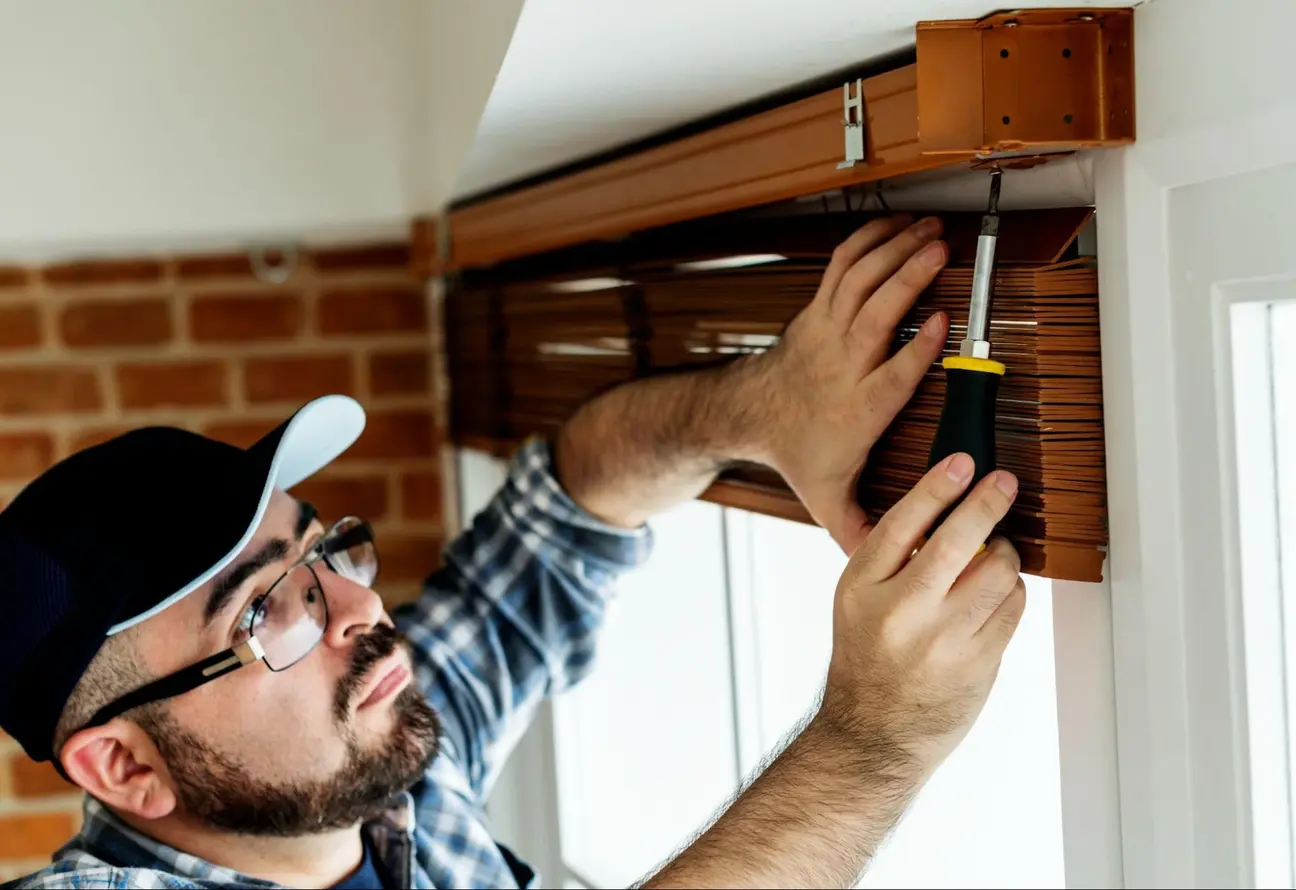
Fixing broken blinds is often easier than you might think. You can repair common issues like damaged slats, tilting problems, and broken cords with the right tools and techniques.
To fix damaged slats on Venetian blinds, start by removing the broken slats. Raise the blinds fully and secure them in place. Take off the end caps from the bottom rail.
Slide out the damaged slats carefully. Replace them with new slats of the same size and material. Ensure the replacement slats match the color and style of your existing blinds.
For minor scratches or dents, try using a wood filler or touch-up marker. Apply the filler to the damaged area and sand it smooth once it dries. For deeper scratches, you may need to repaint the slat entirely.
If your blinds won’t tilt properly, the issue often lies with the tilt mechanism. First, check if the tilt wand is securely attached to the headrail. If it’s loose, reattach it firmly.
Inspect the cord for tangles or knots in blinds with a tilt system. Gently untangle any knots you find. If the cord is frayed or broken, you’ll need to replace it.
Sometimes, the problem is inside the headrail. Open the headrail and look for any obstructions or debris. Clean out any dust or buildup that might interfere with the tilt mechanism.
To replace a broken lift cord, start by removing the blinds from the window brackets. Take off the bottom rail and pull out the old cord. Thread the new cord through the route holes in the slats.
Tie a knot at the end of the cord and insert it into the bottom rail. Reattach the bottom rail to the blinds. Pull the cord through the headrail and connect it to the cord lock mechanism.
You’ll need to replace the carrier stems for vertical blinds with broken ones. Remove the blind and use pliers to grip the carrier body. Gently twist and pull the old stem out, then insert the new one.
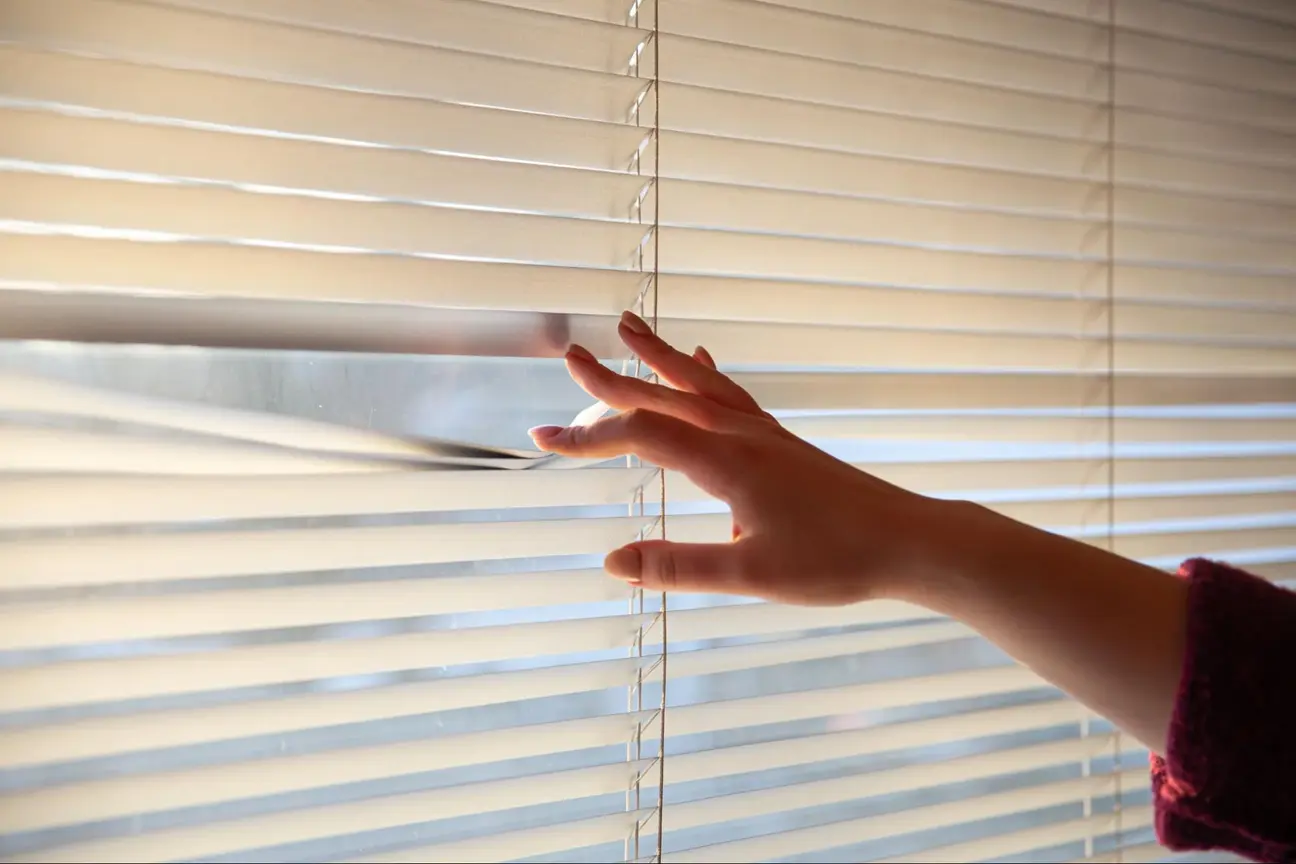
After fixing your broken blinds, ensuring everything is secure and functioning properly is crucial. These final steps will help you verify the repair and ensure smooth operation.
Check all cords and strings to make sure they’re firmly attached. Tie off any loose ends with a tight knot. Trim excess cord, leaving about an inch.
Reattach any clips or carriers that may have come loose during the repair for vertical blinds. Gently push each slat back into place.
If you replaced slats, make sure they’re aligned with the others. Adjust as needed for a uniform look.
Double-check that the headrail is securely fastened to the brackets. Tighten any screws that may have loosened.
Raise and lower the blinds several times to test smooth operation. Listen for any unusual noises that might indicate a problem.
Open and close the slats fully. They should move easily and stay in position when adjusted.
Test the spring mechanism for cordless blinds by raising and lowering them multiple times. They should stay in place at any height.
Check that the blinds hang evenly when fully lowered. If not, adjust the cord lengths or bottom rail until level.
Test the tilt mechanism to ensure slats rotate smoothly in both directions. Lubricate if necessary.
Fixing broken blinds often involves simple repairs you can do at home. These common issues have straightforward solutions that can save you money and extend the life of your window treatments.
Consider professional help for complex issues or valuable window treatments. Kaminskiy Care and Repair offers expert services for tricky blind repairs.
To fix a broken slat, raise the blinds fully and secure them in place. Remove the bottom rail end caps. Slide out the damaged slat and replace it with a new one of the same size and material.
Check the tilt rod and carrier stems for issues. Clean any debris from the track. If a carrier stem is broken, remove the affected blind and use pliers to twist out the old stem. Insert a new stem of the same size and reattach the blind.
First, check for tangled cords or debris in the mechanism. If necessary, clean and lubricate the moving parts. If the problem persists, you may need to replace the lift cord or adjust the cord lock mechanism.
Try separating stuck slats gently by hand. A hairdryer on low heat can help loosen them if they’re vinyl. For wooden blinds, a slightly damp cloth may help. Always be gentle to avoid further damage.